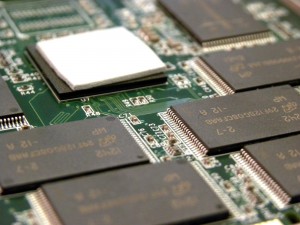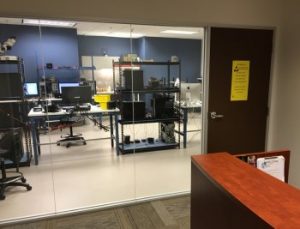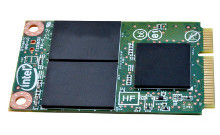Solid-State Drive Data Recovery
SSD Data Recovery Services

Solid-state drive (SSD) technology is the standard for both consumer and business data storage — but while SSD provides advantages over traditional hard disk drives, data loss is still possible.
SSDs are susceptible to drive damage from power surges, firmware corruption (or other firmware issues), logical errors (software failures), and extreme temperatures. When critical files become inaccessible, data recovery from SSDs requires specialized expertise.
Datarecovery.com possesses over two decades of focused experience in solid-state drive recovery. Our recovery experts have worked with virtually every data loss scenario, and all of our laboratories are fully outfitted for solid-state drive recovery including different interfaces and form-factors such as SATA, mSATA, M.2, PCIe (NVMe Drives), etc.
We support our services with guaranteed results, exceptional data security, and the industry’s most comprehensive approach to research & development.
Call 1.800.237.4200 to get started or learn more about our process below.

SSD Data Recovery: Our Process
Our SSD data recovery methodology starts with a thorough, no-cost evaluation to diagnose the type of failure and determine the recovery plan.
Our assessment classifies the case complexity into one of two primary levels:
- Level 1 SSD Recovery: This addresses scenarios where data can potentially be accessed without removing the NAND memory chips. Common Level 1 work includes repairing firmware corruption using proprietary hardware interfaces, resolving logical file system errors with advanced software, or performing necessary electronic component repairs. A complete image of the drive is typically captured via its controller to preserve data integrity while using logical recovery tools.
- Level 2 SSD Recovery: Reserved for cases involving severe physical damage, controller failure, or electronic issues that prevent standard access, Level 2 recovery is significantly more complex. It necessitates the physical removal of individual NAND flash memory chips (NAND chips).
Our recovery specialists then read the raw data from each chip and meticulously reconstruct the original data structure. This chip-off recovery involves reverse-engineering manufacturer-specific wear-leveling algorithms, error correction code (ECC), and data organization patterns — an advanced data recovery solution where our dedicated R&D efforts allow for high success rates even with challenging failures.
In either case, we will use specialized tools and software to read the information and to create a usable copy of any files on the device. It is important to note that most solid-state drives do not have user-serviceable components. We strongly recommend sending any damaged SSD to certified solid-state drive recovery experts.
Why Choose Datarecovery.com for SSD Recovery?
For nearly 30 years, we’ve built our reputation as the world’s most trusted data recovery service provider. Reasons to choose Datarecovery.com:
- Comprehensive SSD Support: We have proven expertise with all major SSD manufacturers (including Samsung, Crucial, Intel, WD, Toshiba/OCZ, Kingston, among others), form factors, and interfaces (SATA, NVMe/PCIe, M.2, mSATA), as well as hybrid drives.
- Proprietary Technology & High Success Rates: Continuous investment in R&D yields unique tools and techniques to effectively address physical, electronic, and logical SSD failures, resulting in consistently high recovery success rates.
- Flexible Service Options: We offer tailored turnaround times to meet diverse needs and budgets, including expedited and 24/7/365 emergency recovery services.
- Rigorous Data Security: Your data’s confidentiality is paramount. We adhere to stringent security and access control protocols, incorporating best practices that are aligned with Department of Defense (DoD) standards.
- ‘No Data, No Charge’ Guarantee: Our commitment is to results. If we cannot recover the specific files you require, you will not pay the recovery service fee. Please contact our team for full details.
Call us today at 1.800.237.4200 to set up a free quote or for more information.
Why Professional Recovery is Essential for SSDs
SSDs generally lack user-serviceable components. Using standard data recovery software or DIY methods on a failing SSD is strongly discouraged and often causes permanent data loss. Symptoms such as drastically slowed performance, errors reading files, sudden file corruption, or the drive disappearing from the system often signal progressive failure.

A Datarecovery.com laboratory.
Continued operation or improper recovery attempts can exacerbate the damage or trigger internal SSD processes (like TRIM) that lead to permanent data destruction. If you encounter signs of SSD failure or data loss, power down the device immediately and consult with experienced data recovery professionals.
Call us today at 1.800.237.4200 to set up a free quote or for more information.
Common SSD Data Loss Scenarios and Failure Symptoms
Common SSD failure symptoms include slow transfer rates, repeated file access issues, file corruption, and a large number of bad sectors. Solid-state drive issues are often progressive, which means that they become worse as the drive continues to operate. Common failure scenarios include:
- Controller Chip Malfunction: The SSD controller acts as the drive’s central processor, managing data flow, wear leveling, encryption, and error correction. Failure of this vital chip can occur due to heat, manufacturing defects, or electrical faults. Common symptoms include the drive failing to be recognized by the computer’s BIOS, intermittent freezing, or extremely slow performance, rendering data inaccessible even if the NAND memory chips themselves are functional.
- Firmware Corruption: Firmware is the embedded software that governs the SSD’s operation. It can become corrupted due to sudden power loss during write operations, unsuccessful firmware updates, or internal software bugs. When firmware is corrupted, the drive may become completely unresponsive, report an incorrect storage capacity (like 0MB or a generic identifier), lock up, or deny all access to the stored data. Repairing firmware often requires vendor-specific commands and specialized hardware interfaces.
- Electronic Component Failure: Beyond the controller chip, other components on the SSD’s printed circuit board (PCB) can fail. Power surges, incorrect voltage, liquid exposure, or the failure of capacitors, resistors, or power management circuits can prevent the drive from powering on or communicating correctly, blocking access to the data stored on the NAND chips.
- NAND Flash Memory Degradation: The NAND flash memory cells that store data have a limited number of program/erase (write) cycles. Although sophisticated wear-leveling algorithms distribute writes across the cells to maximize lifespan, cells eventually wear out. This can result in read/write errors, increasing numbers of bad blocks, and eventual data corruption or drive failure, particularly on older or heavily used SSDs.
- Logical File System Errors: Like traditional drives, SSDs can experience logical corruption of the file system structure. This can be caused by unsafe shutdowns, software crashes, malware infections, or partition table errors. Logical damage prevents the operating system from interpreting the file structure, leading to scenarios where the drive appears as RAW, prompts for formatting, or shows missing files/folders, even though the hardware may be perfectly healthy.
- Accidental Deletion & Formatting (with TRIM Complication): Human error, such as accidentally deleting files or formatting the wrong drive, remains a significant cause of data loss. On SSDs, recovery is often complicated by the TRIM command. TRIM allows the operating system to proactively notify the SSD which data blocks are no longer in use (e.g., after deletion). The SSD can then internally erase these blocks during idle time to optimize future write performance. This process can make recovering deleted data significantly harder compared to HDDs, where data typically persists until overwritten.
We do not recommend running data recovery software on an SSD. You should shut your drive off if you encounter any of these issues or if you lose data due to file deletion or software error.
SSD Data Recovery FAQ
How is SSD data recovery different from hard disk drive (HDD) data recovery?
Put simply, SSD data recovery requires a completely different approach. Hard drives store information on magnetic materials that physically move, and common failure scenarios (such as head crashes) involve these components.
Solid state drives don’t have any moving parts. They’re much faster than hard drives, but they’re also subject to memory wear and physical damage. They also store data with a completely different architecture, which we’ve detailed here: How Do Solid State Drives Store Data?.
Most companies that provide hard drive data recovery will also offer services for SSDs; however, the techniques and tools used in the data recovery process are completely different.
Can deleted files be recovered from an SSD?
Recovering deleted files from an SSD presents unique challenges compared to HDDs, primarily due to a feature called TRIM. Enabled by default in modern operating systems, TRIM helps maintain SSD performance by informing the drive which data blocks are free after a file deletion. The SSD controller can then proactively erase these blocks.
While recovery might be possible in some cases — for instance, if TRIM hasn’t yet processed the specific blocks or if the command wasn’t implemented correctly for that operation — it is generally less likely than on HDDs where deleted data typically remains until overwritten. For the best chance of recovering deleted SSD data, it’s crucial to stop using the drive immediately and seek professional evaluation.
Why shouldn’t I use standard data recovery software on a potentially failing SSD?
Standard data recovery software is largely designed for the architecture and common failure modes of traditional hard drives. Using such software on an SSD, especially one showing signs of failure, can be ineffective and potentially harmful. If the SSD has hardware issues (e.g., a failing controller, firmware corruption), the software likely won’t access the data correctly and could worsen the problem by placing additional stress on the drive.
Furthermore, read/write attempts made by the software might trigger internal SSD functions like garbage collection, which could lead to the permanent erasure of the very data you’re trying to recover. Professional services utilize specialized hardware imagers and low-level tools designed to safely interface with SSDs and address these complexities.
Is SSD data recovery always successful?
 While Datarecovery.com maintains high success rates through advanced techniques and continuous research, data recovery from SSDs is not guaranteed in every instance. The success potential depends heavily on the specific failure mode, the condition of the NAND flash memory chips, and the functionality of the SSD controller. (Learn more about SSD controllers on this blog from Sabrent).
While Datarecovery.com maintains high success rates through advanced techniques and continuous research, data recovery from SSDs is not guaranteed in every instance. The success potential depends heavily on the specific failure mode, the condition of the NAND flash memory chips, and the functionality of the SSD controller. (Learn more about SSD controllers on this blog from Sabrent).
Factors like severe physical trauma (crushing, snapping), catastrophic electronic damage affecting the NAND chips directly, or unrecoverable firmware module corruption can make data irretrievable. Robust hardware-level encryption adds another layer of complexity; even if the raw data is recovered, decryption requires the correct user credentials or recovery keys. Our initial evaluation assesses the specific situation and provides an outlook on the potential for successful recovery.
What are the first steps I should take if my SSD fails or data is lost?
The absolute first step is critical: stop using the drive immediately. Power down the computer or device containing the SSD as quickly and safely as possible. Continued operation can escalate logical errors, cause further electronic damage if there’s a component issue, or allow background OS/SSD processes (like TRIM) to overwrite or permanently erase potentially recoverable data.
Do not attempt to run chkdsk/fsck, install recovery software, or repeatedly reboot the system if it’s failing to load. If you are comfortable doing so, you can physically disconnect the SSD. Contact a reputable professional data recovery service. Document the symptoms you observed and the events leading up to the failure to provide the technicians with useful diagnostic information.
What determines the cost of SSD data recovery?
The cost primarily reflects the complexity of the recovery process needed for your specific situation, determined during our evaluation. Key factors include the nature of the failure (e.g., simple logical corruption vs. complex controller failure), the SSD model and interface (NVMe PCIe drives can be more complex than SATA), whether Level 2 recovery involving NAND chip removal and data reconstruction is required, and the requested service level (standard vs. expedited/emergency).
Cases involving significant electronic repair, intricate firmware reprogramming, advanced encryption, or monolithic “chip-on-board” SSD designs generally demand more intensive engineering time and specialized resources, which can lead to a higher recovery cost. Our laboratories always provide a full quote prior to performing any work, and we provide flexible service options to help keep complex data recovery cases within our clients’ budgets.
Note: The odds of success are not directly related to the cost of recovery. Certain SSDs with advanced features may simply require more engineering time. Even in complex data recovery situations, the chances of a full recovery can be very high.
